If you’re dreaming of soaking your stresses away in traditional Japanese baths, Kyoto’s onsen (hot springs) scene offers exactly what you need. The scenery is serene. This historic city has more than just ancient temples and teahouses. It has a secret: rejuvenating, soul-soothing retreats. These retreats are nestled in the hills, forests, and hidden valleys. Whether you’re wild about outdoor baths under the stars, or you are seeking cozy indoor ryokan experiences, this guide will help you. It will help you discover the ultimate escapes for relaxation in Kyoto.
Why Kyoto Onsen Are a Must
Kyoto’s onsen culture blends nature, tradition, and wellness into perfect harmony. Here’s why these hot springs are a game-changer:
- Historic Healing – Kyoto’s onsen boast mineral-rich waters believed to soothe aching muscles, improve circulation, and relieve fatigue.
- Timeless Setting – Think moss-covered stone lanterns, bamboo groves, and steam swirling in misty valleys—on accentuates the Zen atmosphere.
- Ryokan Rituals – Expect soft hospitality, wooden bathhouses, yuzu baths, tucked-in yukata robes, and meals that honor local seasonal produce.
- Spiritual Reset – Onsen aren’t just for the body. The slow soak often leads to mental calmness, mindfulness, and deep gratitude.
Stick with me, I’ll walk you through Kyoto’s top onsen destinations, how to experience them, practical travel advice, and FAQs so you can plan your ultimate relaxation escape.
1. Kurama Onsen – Mountain-Temple Bathin
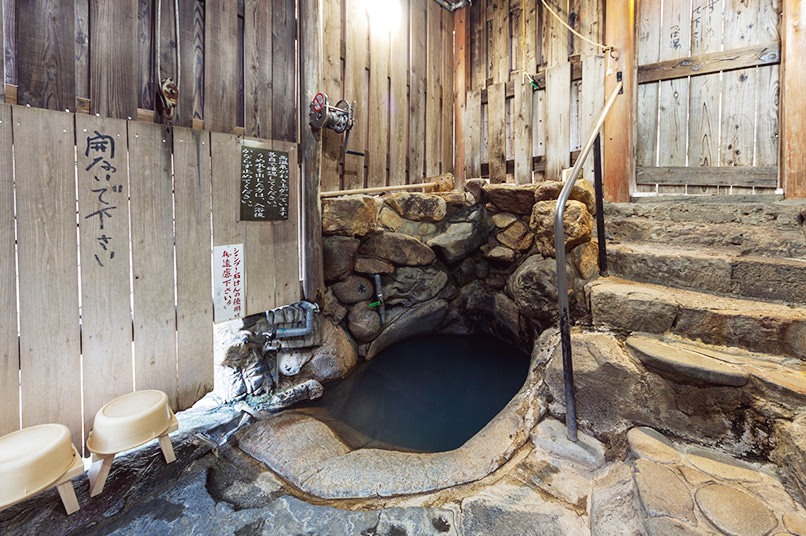
Best For: Outdoor fans, hot spring purity, spiritual ambiance
Why It’s Special
A scenic 30-minute train ride north of central Kyoto, Kurama Onsen sits near the tranquil Kurama-dera Temple in cedar forests. You feel like you’ve stepped into a secluded world.
There’s both indoor baths and a rotenburo (outdoor bath) with dreamy forest views. Bathing under tall cedars while steam rises in the morning sun is unforgettable. A sweet bonus? A natural river just next door where you can cool off post-soak.
Insider Tips
- Arrive early (9–10 a.m.) to enjoy the forest before crowds.
- Wear a yukata to explore the property and sip matcha or sake afterward.
- Book ahead on weekends this place fills fast.
2. Funaoka Onsen – Local Gem, Showa-Era Nostalgia
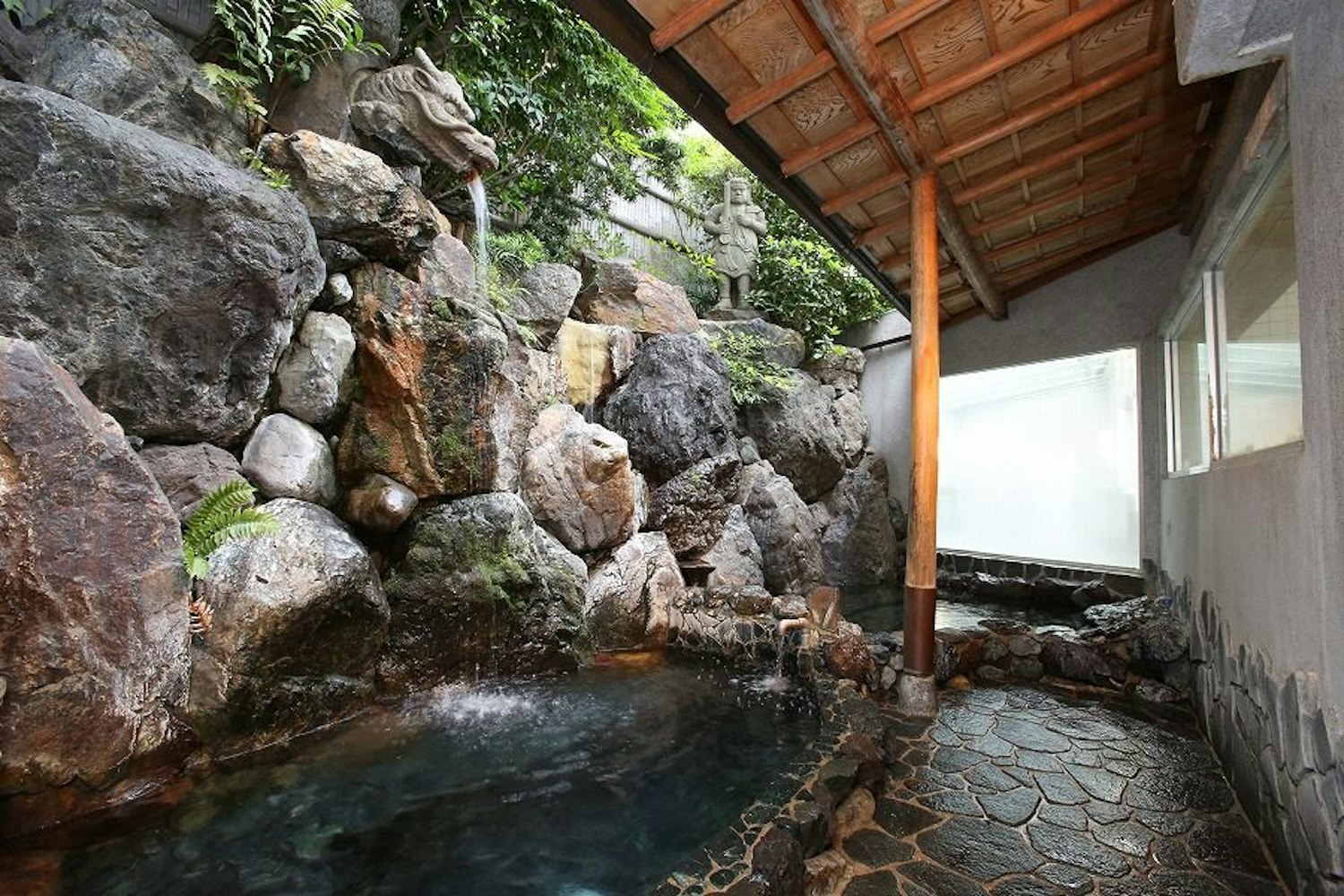
Best For: Budget travelers, vintage charm, public bath lovers
Why It’s Special
Back in the city, Funaoka Onsen offers a bathhouse experience loved by locals. Opened in 1923, it retains retro ceramic tiles, stained glass windows, mosaic murals, and richly painted dragons overhead.
The central marble bath, rotenburo with copper tubs, steam room, sauna, and even relaxation lounges make it feel like stepping into time.
Insider Tips
- Bring cold water or soda—drinks are vending-machine only.
- Go off hours or early evening to beat the local post-work crowd.
- No English? No problem—just point to your bottle or soap, and staff are helpful.
3. Arashiyama Onsen at Spa World Annex
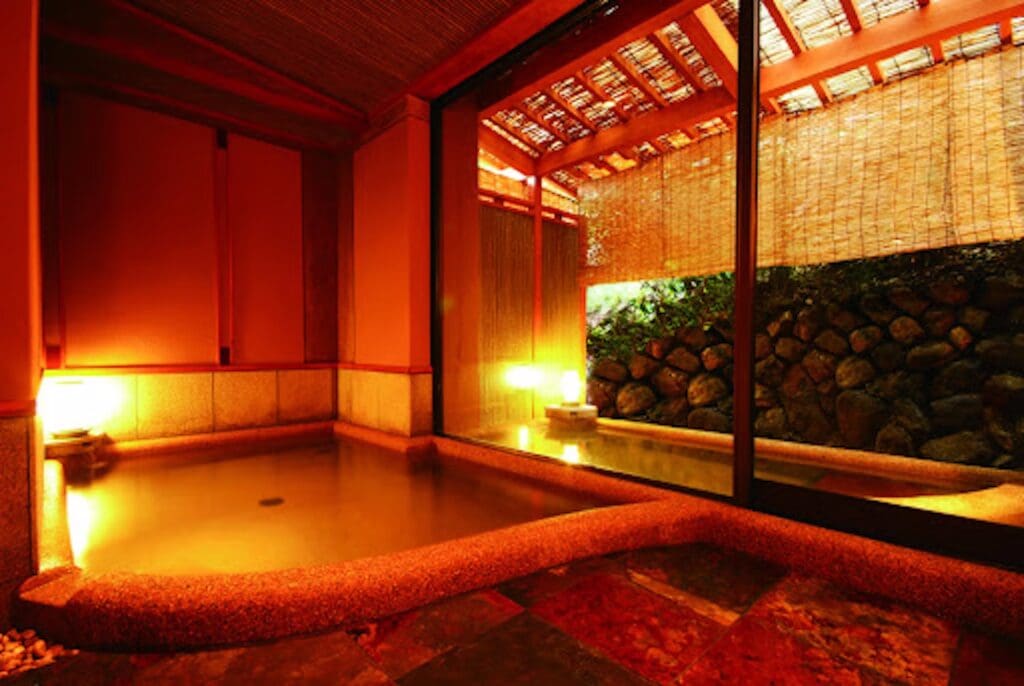
Best For: Families, tourists, river-view scenes
Why It’s Special
Near the scenic Arashiyama bamboo grove and Togetsu Bridge, this onsen sits above a public bath complex with pools, jets, and slides. There’s a dining area, foot baths overlooking the Katsura River, and a modern spin on traditional bathing mixed with leisure.
Insider Tips
- Great for families—both onsen and pool areas make kids feel at home.
- Rent or buy towels/toiletries in the facility.
- Combine with a stroll through bamboo, or boat riding for a full-day trip.
4. Tenzan-no-Yu Gion – Hidden in Historical Streets
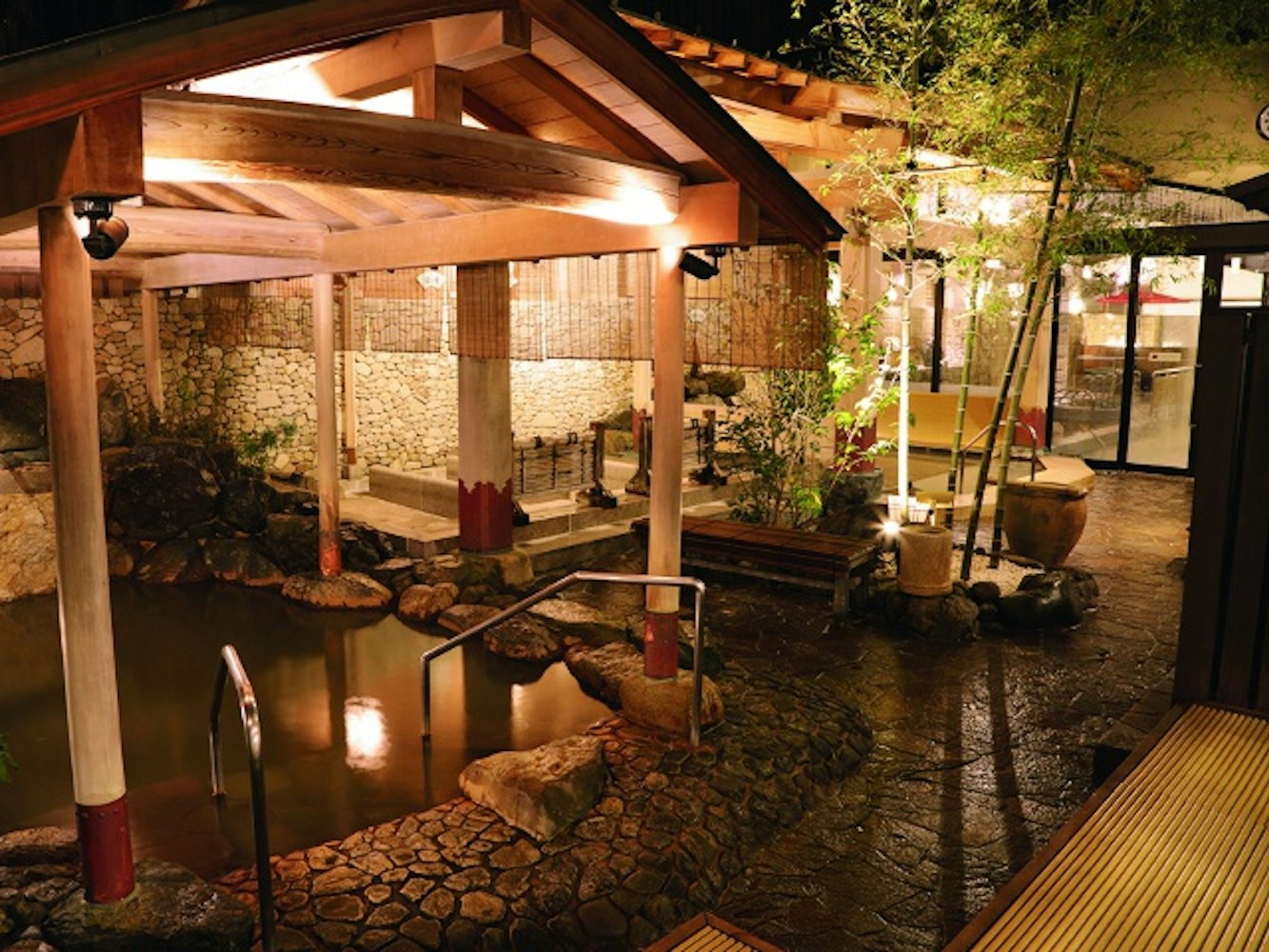
Best For: City dwellers, short indulgences, after-sightseeing respite
Why It’s Special
In Eastern Kyoto’s Gion district, Tenzan-no-Yu is a peaceful escape from festival crowds and street performers. Inside, expect dark wood floors, gentle lighting, and several baths—rotenburo included.
Highlights include specialty baths like charcoal for detox, Hinoki (cypress) tub, outdoor stone bath, jacuzzi, and sauna.
Insider Tips
- Drop your bags—many come between sightseeing and evening shows.
- They provide yukata, towels, locker keyv walk right in!
- Kids are welcome until early evening.
5. Yase Hōgon-in Onsen – Hidden Temple Spa
Best For: Privacy-seekers, Zen lovers, storybook seclusion
Why It’s Special
Tucked into northern Kyoto’s hills, near quaint shrines, sits a boutique onsen nestled in lush moss and violin-like crows. Soak while listening to the river below and lantern-lit temple steps at twilight.
There are only a few bathing areas and just a handful of boutique ryokan-style rooms. Privacy and pace are everything here.
Insider Tips
- Reserve private bathing : rotenburo available just for you.
- Don’t hesitate to ask for an extra yukata, hot towel, or sake.
- Pair your stay with short hikes up to Eikan-do or Nanzen-ji Temple.
6. Kurama-yu Public Bath – Community Core
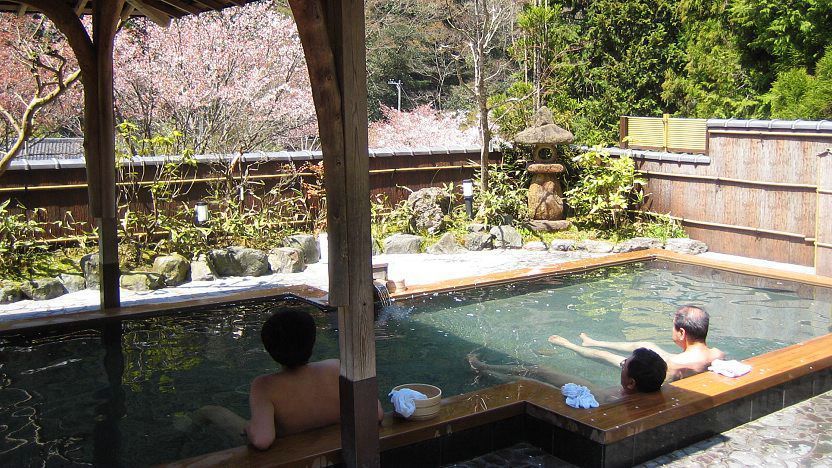
Best For: Casual onsen lovers, rural explorer, low-fuss soak
Why It’s Special
Near Kibune, Kurama-yu is a no-frills community bath surrounded by stone walkways and shop stalls. Its low entrance fee is just the beginning. Expect a classic bathhouse feel Japanese towels, paper cup vending, friendly chatting locals greet you, students join in post-study, there’s nothing fancy but it’s honest and joyful.
Insider Tips
- Bring soap and shampoo—simple amenities only.
- Its tiny size means it’s social—great for travel chat.
- Go after exploring the trail from Kurama to Kibune best way to warm up.
Comparing Kyoto Onsen Options
| Onsen / Bathhouse | Location | Style | Best Time | Highlight |
| Kurama Onsen | Northern hills | Ryokan-style, outdoor bath | Whole year | Forest rotenburo, river cool-off |
| Funaoka Onsen | Northwest city | Retro public bath | Year-round | Showa finishings, local scene |
| Arashiyama Onsen Annex | Arashiyama district | Family-friendly, pools | Year-round | Pool-park + river views |
| Tenzan-no-Yu Gion | City (Gion) | Lux ryokan, charcoal bath | Anytime | Detox baths & cypress resting area |
| Yase Hōgon-in Onsen | Moss-covered hills | Boutique, private bookings | Best in summer-Fall | Temple garden views, privacy |
| Kurama-yu Public Bath | Rural Kurama area | Community onsen | Anytime | Cheapest, local interaction |
Onsen Etiquette
Be prepared to follow Japanese onsen etiquette, gentle respect ensures everyone enjoys a peaceful soak:
- Wash Thoroughly First – Rinse off soap/shampoo at the communal shower before entering the bath.
- No Swimwear – Onsen are enjoyed nude. Private baths are exceptions.
- No Towels in the Water – Use small “modesty towel” outside the bath or on your head.
- Quiet Environment – Refrain from loud talking, phone use, or splashing.
- Long Hair Tied Up – Keep it above water or secure it.
- Stay Healthy – No open wounds or intoxication allowed.
- Cool Down Gradually – Use foot baths or relaxation areas before fully leaving.
Transport & Access Tips
- Kurama and Kibune Onsen: Take Eizan Railway from Demachiyanagi. It’s a scenic ride—reserve minutes just to sit by the door and watch bamboo flash by.
- Funaoka Onsen: Bus stops outside (Kyoto-city #37 or 205), near Funaoka-yu-mae. Or taxi it after the subway.
- Arashiyama Annex: 5-min walk from JR Saga-Arashiyama Station, or 15 from Hankyu-Arashiyama.
- Gion Tenzan-no-Yu: Around 8 min by bus from Gion-Shijo Station.
- Yase Hōgon-in: Bus from Demachiyanagi or share with taxi—roads are mountain winding, but views are worth it.
Planning a Perfect Onsen Day in Kyoto
- Map Your Day Smartly
- Example: Morning Arashiyama sightseeing → soak in the onsen by river → lunch beside Togetsu Bridge.
- Another: Peaceful temple stroll near Gion → urban onsen soak → evening geisha district walk.
- Mix Private & Public Experiences
- Combine historical ryokan with spontaneous communal baths for perspective.
- Add Wellness Moments
- Follow soak with Japanese matcha, seasonal river-view yuzu baths, or a light temple-brunch.
- Be Weather-Wise
- Fall and winter are best for steamy retreats.
- Rain and green are magical too—Kyoto glows after snow.
- Summer? Try early morning at Kurama before heat sets in.
Frequently Asked Questions (FAQ)
1. Do I need to reserve before going to these onsen?
- Kurama Onsen and Yase Hōgon-in often require advance bookings, especially for private indoor or outdoor baths. Funaoka and Kurama-yu are walk-in friendly.
2. Are tattoos allowed?
- Most public onsen don’t allow visible tattoos, but exceptions exist for private baths. Ask in advance if you need cover-up tape or private access.
3. Can I bring my own towel/shampoo?
- Yes! Especially for public onsen. Many ryokan provide amenities too, but always check before packing.
4. Are soaking pools clean?
- Yes—onsen uphold strict hygiene. Hot water, drainage, and chemical checks are daily routines.
5. Do I have to be naked?
- Yes, unless you reserve a private bath. Private/shared ones allow modesty towels outside or over the head.
6. Can I go in a group?
- Most onsen allow groups of friends or small families. Private reservations help guarantee space.
7. Best season for onsen?
- Late autumn to early spring is dreamy and colder weather brings coziness. Summer mornings in the mountains can be refreshing too.
Final Thoughts – Onsen in Kyoto
Kyoto’s onsen scene is an intricate blend of ancient bathhouse culture, lush landscapes, and restorative rituals. Whether you’re wandering bamboo groves in Arashiyama, losing time in the hush of Kurama’s forests, or revisiting history in Gion’s heart, the hot springs offer quiet moments that linger.
So pack your yukata, leave your phone in the locker, exhale deeply, and prepare to soak all the way into your soul. Your Kyoto journey isn’t complete without a heartfelt “aaaaah…” in water heated by centuries of tradition.
Your most memorable moment in Kyoto might just be the steam swirling around your shoulders as night falls on a moss-covered rock. And if you let it, the onsen will wash away everything except gratitude and awe.

Join Us and book your tour now!
My another travel booking site is https://www.cityunscripted.com/ you can check the reviews here!
